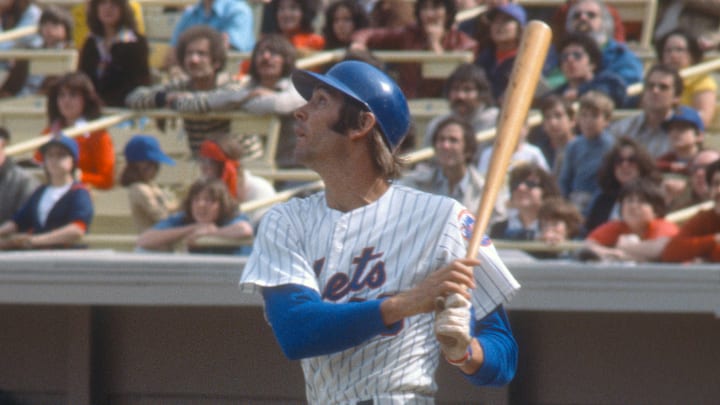
Rusty Staub
The man known as “Le Grand Orange” for his flaming red locks had two productive stints with the Mets, from 1972-75 and 1981-85. During his first turn in Queens, he was generally an everyday player, but his playing time diminished to a bench role in his second go-around. Nonetheless, Staub was solid at the plate while with the Mets. Over his nine years with the Amazins, Staub hit .276 with 75 home runs, 399 RBIs, and a 119 OPS+.
His defense, however, left something to be desired in both of his Flushing tenures. Staub notched a defensive WAR of -8.0 as a Met while playing mostly right field, with some left field and first base sprinkled in. His career total zone was -51, and two of his overall worst defensive seasons in that department came in 1972 and 1974 with the Mets, when he posted a TZ of -10 and -18 in the outfield, respectively.
Staub did have a shining moment for the Mets on defense in Game 4 of the 1973 National League Championship Series. In the 11th inning, when the opposing Cincinnati Reds had two men on in a tie game, Staub made an impressive running grab in the outfield that saved at least one, if not two, runs, though he then crashed into the wall. The Mets lost that game, 2-1, but they won the deciding Game 5 and took the Oakland A’s to Game 7 of the World Series. Staub’s bat was strong in the Fall Classic, as he batted .423 with a home run and six RBIs over the seven games, but his arm strength was heavily diminished after crashing into the wall in the NLCS.
Even with that NLCS web gem, when all was said and done, Staub’s bat mostly outshined his glove while with the Mets. Had the Amazins been afforded a DH back in his playing days, he would have been a very worthy contender to fill that slot.
